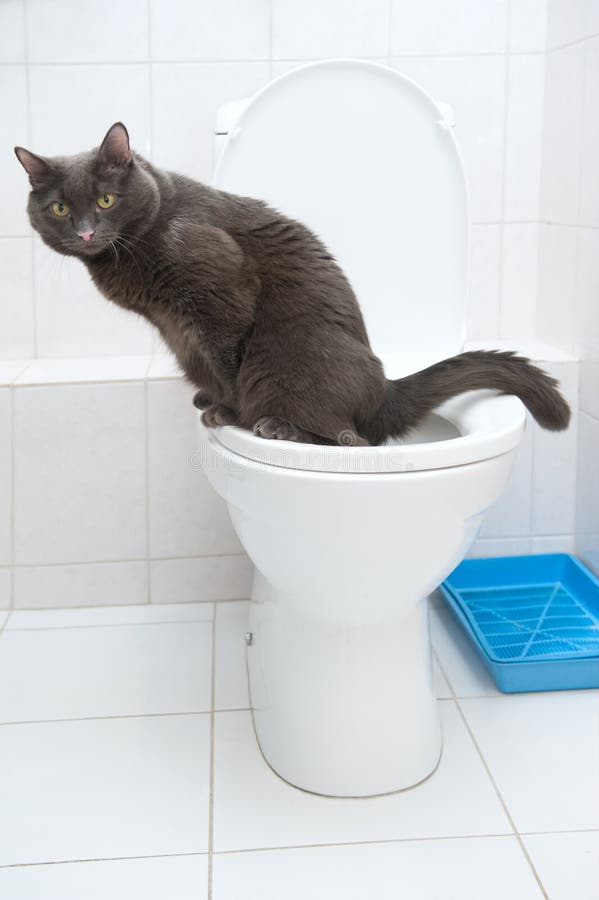Avoid Flush Cat Poop Down Your Toilet - Protect Your Pipes System
Avoid Flush Cat Poop Down Your Toilet - Protect Your Pipes System
Blog Article
Are you currently looking for info around How to Dispose of Cat Poop and Litter Without Plastic Bags?

Intro
As cat proprietors, it's necessary to be mindful of exactly how we deal with our feline friends' waste. While it may appear convenient to purge cat poop down the commode, this practice can have damaging effects for both the atmosphere and human health and wellness.
Ecological Impact
Purging cat poop introduces dangerous virus and parasites into the supply of water, presenting a substantial threat to marine ecosystems. These contaminants can negatively impact aquatic life and concession water top quality.
Wellness Risks
Along with environmental issues, flushing pet cat waste can additionally present health and wellness risks to humans. Pet cat feces may consist of Toxoplasma gondii, a bloodsucker that can trigger toxoplasmosis-- a potentially extreme illness, particularly for expectant ladies and people with weakened body immune systems.
Alternatives to Flushing
The good news is, there are much safer and extra liable means to throw away feline poop. Take into consideration the complying with alternatives:
1. Scoop and Dispose in Trash
One of the most usual technique of taking care of cat poop is to scoop it right into a naturally degradable bag and toss it in the trash. Be sure to make use of a dedicated clutter scoop and dispose of the waste immediately.
2. Use Biodegradable Litter
Select biodegradable cat litter made from materials such as corn or wheat. These litters are environmentally friendly and can be securely dealt with in the trash.
3. Hide in the Yard
If you have a backyard, think about burying cat waste in a marked location away from veggie yards and water sources. Be sure to dig deep enough to prevent contamination of groundwater.
4. Set Up a Pet Waste Disposal System
Purchase a family pet waste disposal system specifically created for feline waste. These systems make use of enzymes to break down the waste, decreasing smell and environmental impact.
Conclusion
Liable animal possession extends past offering food and sanctuary-- it additionally entails proper waste monitoring. By refraining from purging cat poop down the bathroom and choosing alternative disposal approaches, we can reduce our ecological impact and safeguard human wellness.
Why Can’t I Flush Cat Poop?
It Spreads a Parasite
Cats are frequently infected with a parasite called toxoplasma gondii. The parasite causes an infection called toxoplasmosis. It is usually harmless to cats. The parasite only uses cat poop as a host for its eggs. Otherwise, the cat’s immune system usually keeps the infection at low enough levels to maintain its own health. But it does not stop the develop of eggs. These eggs are tiny and surprisingly tough. They may survive for a year before they begin to grow. But that’s the problem.
Our wastewater system is not designed to deal with toxoplasmosis eggs. Instead, most eggs will flush from your toilet into sewers and wastewater management plants. After the sewage is treated for many other harmful things in it, it is typically released into local rivers, lakes, or oceans. Here, the toxoplasmosis eggs can find new hosts, including starfish, crabs, otters, and many other wildlife. For many, this is a significant risk to their health. Toxoplasmosis can also end up infecting water sources that are important for agriculture, which means our deer, pigs, and sheep can get infected too.
Is There Risk to Humans?
There can be a risk to human life from flushing cat poop down the toilet. If you do so, the parasites from your cat’s poop can end up in shellfish, game animals, or livestock. If this meat is then served raw or undercooked, the people who eat it can get sick.
In fact, according to the CDC, 40 million people in the United States are infected with toxoplasma gondii. They get it from exposure to infected seafood, or from some kind of cat poop contamination, like drinking from a stream that is contaminated or touching anything that has come into contact with cat poop. That includes just cleaning a cat litter box.
Most people who get infected with these parasites will not develop any symptoms. However, for pregnant women or for those with compromised immune systems, the parasite can cause severe health problems.
How to Handle Cat Poop
The best way to handle cat poop is actually to clean the box more often. The eggs that the parasite sheds will not become active until one to five days after the cat poops. That means that if you clean daily, you’re much less likely to come into direct contact with infectious eggs.
That said, always dispose of cat poop in the garbage and not down the toilet. Wash your hands before and after you clean the litter box, and bring the bag of poop right outside to your garbage bins.
https://trenchlesssolutionsusa.com/why-cant-i-flush-cat-poop/

Do you really like reading about Don’t flush cat feces down the toilet? Give a comment down below. We would be glad to know your insights about this post. We hope to see you back again later on. Appreciated our review? Please share it. Let others find it. Thanks a lot for your time. Don't forget to stop by our website back soon.
Call Us Today Report this page